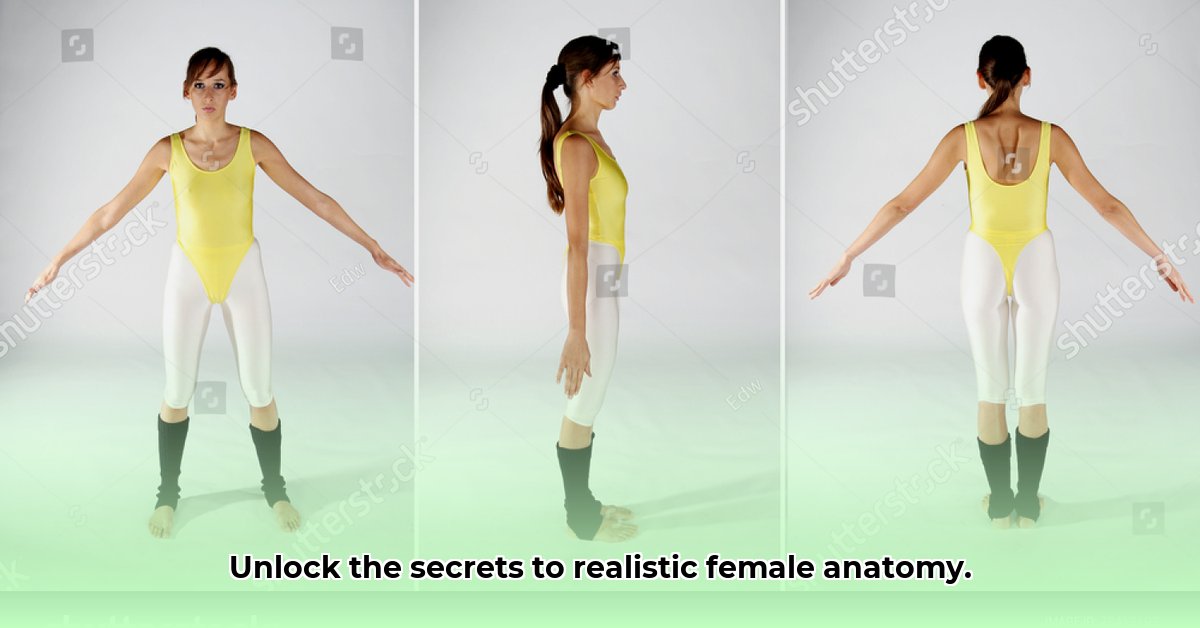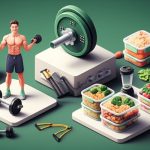Want to draw amazing female figures in your digital art? Finding the perfect reference images can be a real headache. This guide will help you navigate the world of online resources, from traditional photo sites to the latest AI tools. We’ll show you the best places to look, explain the pros and cons of each, and walk you through how to use them to create stunning artwork. Whether you’re a pro or just starting out, we’ll cover everything from finding great references to using AI responsibly, ensuring your art is both beautiful and accurate.
Unlock Your Artistic Potential: The Power of Female Body References
Want to create truly captivating art that resonates with viewers? Mastering the art of using female body references is more than just copying images; it’s about unlocking a deeper understanding of the human form, enabling you to breathe life into your artistic visions. This guide will explore how to effectively incorporate references into your creative process, elevating your artistic skills and transforming your workflow.
Exploring the Vast Landscape of Female Body Reference Resources
The digital art world is brimming with incredible resources for finding female body references, each offering unique tools and approaches. A vast array of websites and platforms cater specifically to artists’ needs, providing a wide range of tools and styles. Some focus on fostering a strong artistic community with extensive support, while others prioritize user-friendliness and specialized features. This abundance of choice can be both exciting and overwhelming. How do you navigate this landscape to find the best resources for female figure drawing?
One of the most significant recent advancements is the emergence of AI-powered tools. These are revolutionizing how artists discover and utilize references. Software that automatically generates poses, for example, provides unprecedented speed and convenience. However, does this technology completely supersede the value of traditional artistic study? This is a crucial question to consider as we delve deeper into the impact of AI art generators.
Core Insights:
- A multitude of websites and platforms cater specifically to the diverse needs of artists seeking female body references.
- AI-powered tools are transforming the reference acquisition process, offering remarkable speed and pose generation capabilities.
- Maintaining a balance between AI assistance and traditional artistic study is essential for artists seeking comprehensive skill development.
Choosing the Right Tools: A Practical Guide to Female Body Reference Selection
To maximize your artistic potential, it’s essential to choose the right tools for your specific needs. Here’s a step-by-step guide to help you navigate the selection process and improve your digital art techniques:
- Define Your Artistic Goals: Before diving into the world of resources, clarify your artistic objectives. What type of art are you aiming to create? Do you require dynamic, action-packed poses, detailed anatomical studies for realistic figures, or simpler silhouettes for quick sketching? Aligning your artistic needs with specific resources will streamline your search.
- Explore Diverse Platforms: Conduct thorough research into the various platforms offering female body references. Consider factors such as ease of use, the quality and variety of images and poses, and the cost (some offer free content, while others operate on a subscription basis). Explore platforms like 3D.sk, which focuses on providing a supportive environment for artists, or PoseMy.Art, known for its extensive library of animations and poses.
- Test Before Committing: Many websites provide free trials or limited free access. Take advantage of these opportunities to thoroughly test the tools before committing to a paid subscription. Ensure that the platform aligns seamlessly with your workflow and artistic style, optimizing your creative process.
- Integrate Seamlessly: Once you’ve identified your preferred resources, integrate them seamlessly into your existing digital painting or sculpting workflow. The goal is to create a streamlined and efficient process that enhances your artistic output and facilitates digital sculpting.
- Continuous Learning: The digital art landscape is constantly evolving. Stay updated with the latest technologies and resources to continually refine your skills and discover innovative approaches to your craft. Embrace new platforms and techniques to push your artistic boundaries and discover new ways to create.
AI and Female Body References: Exploring the Advantages and Drawbacks
AI-powered tools offer unprecedented speed and convenience in generating female body references. However, a balanced understanding of both the advantages and disadvantages of using this technology is essential for digital painting:
Pros:
- Unparalleled Speed and Efficiency: Generate countless poses in seconds, saving valuable time. Experiment with a variety of poses and angles to quickly find the perfect reference for your artwork.
- High Customization: Fine-tune poses to match your precise needs. Manipulate body proportions, adjust limb positions, and change camera angles to create references that perfectly align with your artistic vision.
- Expanded Accessibility: Access a vast range of poses and variations that might be difficult or impossible to find otherwise. Explore unique and dynamic poses that inspire creativity and broaden your artistic horizons.
Cons:
- Potential for Unintentional Bias: AI algorithms are trained on existing datasets. If these datasets exhibit biases, the AI may inadvertently perpetuate unrealistic or stereotypical representations of the female form, potentially affecting anatomical accuracy in art. Researchers are actively working to mitigate these biases and develop more representative datasets.
- Ethical Considerations: Questions surrounding copyright and ownership of AI-generated content require careful consideration. Understand the terms of service and licensing agreements of AI art platforms to ensure ethical and legal compliance.
- Risk of Over-Reliance: Over-dependence on AI tools may hinder the development of fundamental anatomical knowledge and artistic intuition, hindering the development of a skilled artist. Balance AI assistance with traditional study methods to build a solid foundation of artistic skills.
Beyond Digital: The Enduring Value of Traditional Art Study
While digital tools are incredibly powerful, never underestimate the value of traditional art education. Direct observation and careful sketching enhance your understanding of human anatomy, which is essential for creating realistic and convincing figures. Digital female body references are excellent tools for enhancing your work, but they should complement, not replace, foundational understanding. Embrace traditional artistic practices to strengthen your core skills in figure drawing.
The Evolving Landscape of Female Body References
The future of female body references will likely see even greater integration with AI technology. Expect even more sophisticated tools that can generate hyperrealistic poses, emulate diverse artistic styles, and personalize references based on individual artist preferences. However, artists must remain aware of ethical considerations and concentrate on developing robust artistic skills to succeed in the digital art world.
Ultimately, the most valuable female body reference resources are those that empower you to unleash your creativity and realize your artistic vision. Experiment with different approaches, adapt your methods, and continuously evolve your process as you grow as an artist. Remember that the journey of artistic growth is just as important as the final artwork.
Mitigating Legal Risks When Using AI-Generated Art Resources
Creating breathtaking art with AI is exciting, but navigating the legal landscape can feel like entering a minefield. Understanding the risks and implementing strategies to stay on the right side of the law is crucial, particularly when using AI art generators. Let’s explore the best practices for creating legally sound AI-generated art.
Understanding the Copyright Conundrum
The central issue revolves around copyright infringement. Generative AI models are trained on vast datasets, many containing copyrighted material. This raises two key concerns:
- The training data itself might infringe on existing copyrights.
- The AI’s output could be so similar to existing works that it constitutes copyright infringement.
Imagine that the AI learns to paint by studying countless masterpieces. If its creations closely resemble those original works, it raises copyright concerns. This intricate issue lacks clear legal boundaries, making it a complex area. Even utilizing open-source models doesn’t eliminate the risk, as the origin of the training data, not the model itself, is the primary concern.
Strategies for Mitigating Legal Risks
The good news is you can take proactive steps to minimize your legal exposure. Here’s a breakdown of effective strategies for legal art creation:
- Refine Prompt Engineering: The language you use when prompting the AI significantly impacts the output. Vague prompts increase the chance of unintentional copying. Employ precise and creative instructions to guide the AI towards original designs, ensuring copyright in art.
- Carefully Review the Terms of Service: Before using any AI art platform, thoroughly read and understand their terms of service. Pay close attention to details regarding copyright ownership, indemnification, and liability limitations. Ensure you understand the protections offered by the platform (if any), preventing art law violations.
- Consider Licensing Options: Exploring licensing options for your AI-generated art might provide additional legal protection. Licensing ensures you have the right to use and distribute your creations commercially, providing protection for artists. Research different license types and select one that aligns best with your requirements.
- Seek Legal Counsel: If you’re creating art for commercial purposes or have concerns about potential legal challenges, consult an attorney specializing in intellectual property law. They can provide tailored guidance and navigate the complexities of AI-generated art copyright.
- Utilize Public Domain and Creative Commons Resources: Supplement your AI prompts with images and data from the public domain or those under Creative Commons licenses and use royalty free images. Remember to cite your sources appropriately, acknowledging the original creators.
Navigating the Evolving Legal Landscape
The legal interpretations surrounding AI-generated art are still evolving. Lawsuits are underway, and the judicial system is grappling with defining “substantial similarity” in this new context. Staying informed about legal developments and court decisions is essential.
The legal landscape surrounding AI-generated art is rapidly evolving, creating uncertainty for artists and creators. Forbes reported in January 2024 that careful risk mitigation is essential in navigating these legal complexities [1].
Key Takeaways:
- AI
- Gluten Free Meal Prep Ideas for Delicious, Hassle-Free Eating - November 28, 2025
- Gluten Free Meal Prep for Stress-Free and Healthy Eating - November 27, 2025
- Quick And Easy Chicken Thigh Meal Prep For Weight Loss - November 26, 2025










